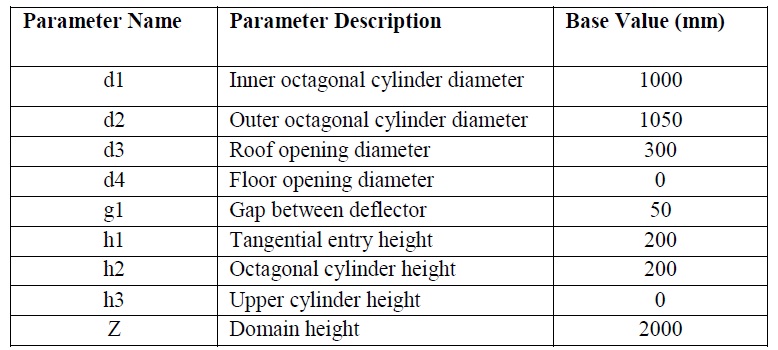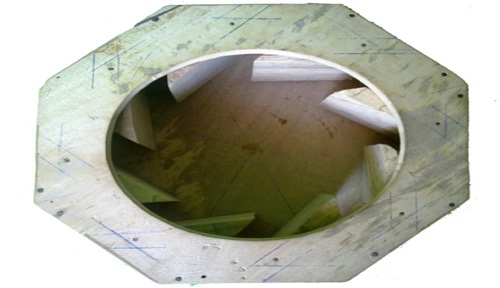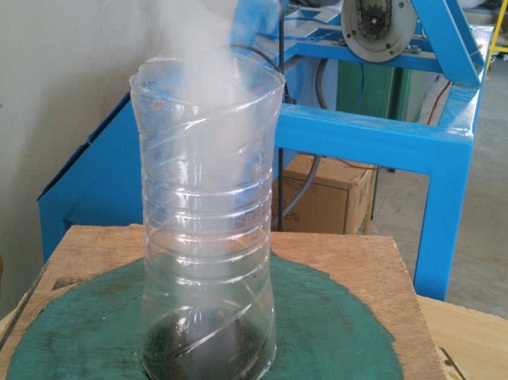





Published on Mar 01, 2025
The demand for power has been increased nowadays in many folds and the need for a better, reliable and cleaner source of energy has become essential. Ultimately our aim is to fulfill the requirements of power demand. By research it is found that atmospheric vortex engine (AVE), the twin of solar chimney, seems to be a promising source and has many advantages than the latter. Through this research it is possible generating power from the residual heat source from the industries/thermal power plants.
The AVE model is designed using computerized modeling and analyzed it using computational fluid dynamics. By varying the parameters, that influence the performance of AVE, it is studied to obtain an optimum design and operating conditions. Also the AVE scaled model is fabricated and passed the flow to study about the vortex practically. It is found that it has enough strength to rotate a small turbine placed inside it. Also the smoke has been passed and small particles to visualize the flow. In this research the results of the CFD analysis to show that AVE is capable of producing a sustained vortex, to generate power. This paper also serves as a base for future research.
In this vast growing world, need for a clean energy beacons among the researchers from around the world. Some of the energy sources have been identified as renewable, most of them from the sun or movements in air or water currents due to earth’s rotation. Each and every method has its own advantages as well as limitations. Solar panels involve the usage of rare elements and are costly, various other methods such as geo thermal, tidal etc., require complex assemblies and are not reliable throughout a year. The concept of updraft and vortex is used to produce power from the source.
Sun’s heat causes changes in density and it produces updrafts. Power from the tornadoes is possible but it was not obtained in the real case . The atmospheric vortex engine has a combination of principle of tornadoes and the principle of solar chimney. The free vortex is the vortex circulates faster than the fluid far from the centre than in the centre. The forced vortex is the fluid rotates as a solid body and this is used to create the vortices. The properties of the vortex are fluid pressure is lowest in the centre and rises from the centre also it starts and ends only in the boundary of the fluid or form closed loops. The change in temperature causes change in density so the movement of lighter air to fill vacuum is termed as Updraft
The solar chimney is a base idea for AVE and the principle behind solar chimney is the air is heated by solar radiation under a transparent roof the roof and the natural ground below form an air collector and in the middle of the roof is a vertical tower as hot air is lighter than cold air it rises up the tower. The solar chimney converts solar energy into thermal energy and then to kinetic energy and then to electrical power.
The atmospheric vortex engine (AVE) uses an artificially created vortex to capture the mechanical energy produced during upward heat convection. The heat source can be solar energy, warm seawater or waste industrial heat. The AVE has the same thermodynamic basis as a solar chimney. Thus solar radiation or heated air causes a constant updraft in the tower and the energy contained in the updraft is converted into mechanical energy by pressure-staged turbines at the base of the tower, and into electrical energy by conventional generators.
In a forced vortex the fluid rotates as a solid body. The fluid has vorticity of 2ω everywhere, and the free surface (if present) is a paraboloid. The tangential velocity is given by
![]()
Thus from the knowledge given about vortices we can observe, in forced vortex the fluid has a greater velocity at the outer surface and gradually decreases towards the centre.
In this research Gambit is used for designing the vortex engine and fluent for analyzing the model for flow control. To study the vortex flow in real case the model to produce the vortex has been created. If a turbine is placed inside the model and it is capable to rotate by the power of vortex. The vortex flow can be visualized by the smoke test.
The model is designed using gambit by the following specifications. The specifications used are studied from the various papers which are using the concept of solar chimney. The real case chimney is not possible for analysis, scaled down dimensions are used. It is first developed by Louis M.Michaud to derive the power from the updraft and vortex creation. Meshing of the model is done in Gambit and tetrahedral Mesh is used to mesh the model and it is good for solid model.

The model is analyzed in the fluent. By setting up the boundary conditions it can analyze the model. For turbulence model in Computational fluid dynamics k-ε model is used. The pressure and temperature value for the boundary condition is also necessary. We have applied the pressure value for AVE inlet, AVE top and Domain top. Similarly for the temperature for the boundary conditions are applied for AVE inlet, domain wall and domain top. After the boundary condition has been setup we have analyzed using fluent solver and obtained the result.
The model is designed in wood and the smoke is also passed to visualize the vortex. To design this model the scaled down dimensions of AVE is used. It is octagonal in shape and it has eight inlets from each side of the octagon. Floor opening of the AVE is fully closed and it has roof opening. The movable guide vanes like is deflector is placed for each inlet. The vanes can be opened or closed. By using the blower the source of air is passed to the experimental model of AVE. The passing of air from blower also produces heat air and it creates some pressure difference. The pressure difference produces the vortices and it will rotate the turbine if it is placed on the floor of AVE. It is due to the production of vortex. The speed of the turbine is also measured by varying the roof opening diameter. The view of vanes opened and closed position is shown in the Fig. 3

To visualize the vortex the smoke testing method is used. The air is passed in the inlet and the vortex strength is observed.

From this article, it is found AVE design has capability of producing vortex. It can be applied for large scale by this method. From the computational results one can assure that the feasibility of AVE in real case is possible and it is no more conceptual. The advantage of AVE is eco-friendly and also there is no carbon emission. It can use industrial effluents and non hazardous. It is the combination of solar and wind turbine so it has more efficient than other power generating devices. Some disadvantages of the AVE are the height of tower and some noise is produced in the tower. Now it cannot be used on densely populated areas and it requires some additional start-up energy. In future the operating difficulties of AVE in many conditions will be analyzed and it can be used for many purposes.
[1] Church, C.R, Snow, J. T, Baker, G. L, Agee, E.M, “Characteristics of tornado like vortices as a function of swirl ratio”, A laboratory investigation, Journal of the Atmospheric Sciences ,1979.
[2] Djezzar mahfoud, Tayebi tahar, “Numerical simulation of natural convection in a solar chimney”, 2003.
[3] Diwakar Natarajan, “Numerical Simulation of Tornado Like vortices”, University of western Ontario, Canada, 2011.
[4] Fujita T, “Tornadoes and downbursts in the context of generalized panetary scales”, Journal of the Atmospheric Sciences, 1981.